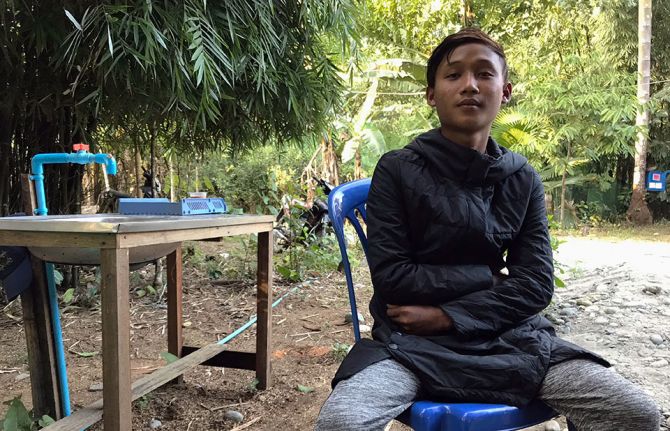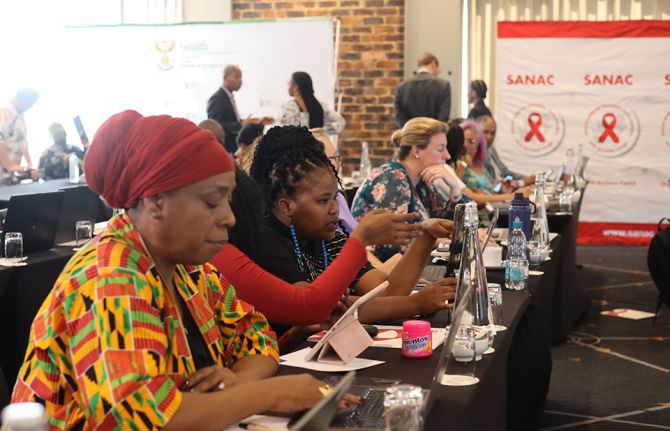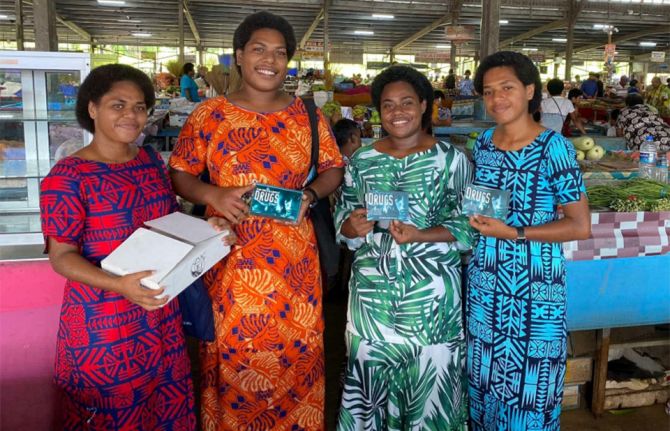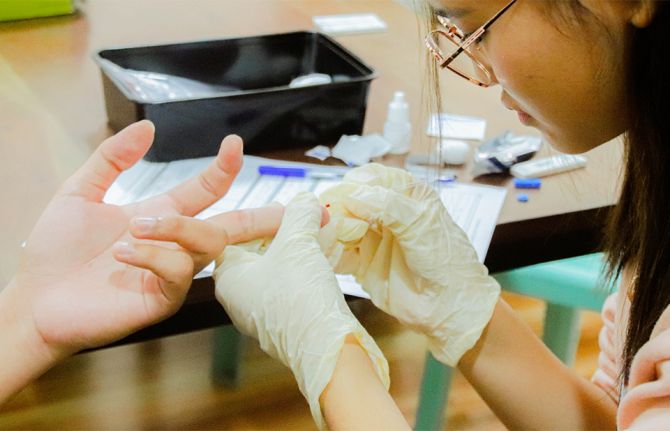

Feature Story
Community members are driving the AIDS response in northern Myanmar
26 March 2020
26 March 2020 26 March 2020Saung Moon was 15 years old when he first injected drugs. “I went out with some people who were using heroin and they persuaded me to try,” he said, puffing on a traditional Myanmar cigarette while squatting around a small fire with his friends.
Mr Moon, now 20 years old, lives in Putao, a remote area at the northern tip of Myanmar. Small rural communities are scattered around the mountainous region, part of the foothills of the Himalayas. But this lush and pristine environment is home to a severe drug epidemic fuelled by the availability of cheap heroin in the region. Widespread injecting drug use is resulting in high rates of HIV and hepatitis B and C infection.
Mr Moon and his friends were huddled around the fire at one of the two Medical Action Myanmar (MAM) facilities in the Putao district. The clinic is a satellite centre of the national AIDS programme and provides services—including needle–syringe exchange, HIV counselling and testing, HIV treatment and care, primary health care, testing and treatment of sexually transmitted infections and family planning—to people who inject drugs. The clinic also refers heroin users to the local hospital for opioid substitution therapy, since only government facilities are currently allowed to distribute methadone in Myanmar.
Mr Moon and his friends feel at ease at the clinic. Some are there to return their used needles and syringes and get clean ones, others to test for HIV or access their HIV treatment. Whatever the reason, health-care workers at the clinic take the opportunity to talk to them and train some of them as peer educators.
“If peer pressure is one of the main causes for heroin use initiation, the same principle applies when it comes to advising about the dangers of injecting drugs and how to prevent HIV transmission,” said MAM’s Medical Director, Cho Myat Nwe.
Raising awareness among people who use drugs is the first step in responding to the drug-related HIV epidemic—there isn’t a more effective way than sharing information and life skills among peers. “At school, we only received a brief talk about drugs, but nothing on HIV,” said one of Mr Moon’s friends. “With the information and training we have received at the clinic we can talk to our friends and provide them with important information to prevent infection.”
Engaging people who use drugs is only half of the challenge. The other half is reducing the stigma and discrimination they encounter in their daily lives.
According to Mrs Cho, people who use drugs are not very popular in their communities. The villagers do not understand why nongovernmental organizations focus their activities on people who use drugs and not on the general population. MAM is therefore working in the communities, providing general health care and discussing drug use and HIV, explaining why services for people who use drugs will have a positive effect on the community as a whole.
Services difficult to access
For most people who use drugs in Putao, getting to the clinic is a problem. The remoteness of the villages—some of them are as far as seven days away from the nearest health facility by foot—the poor infrastructure and the lack of public transport makes accessing services very difficult, especially during the rainy season. This leads to relatively high levels of people on long-term treatment stopping their treatment, including HIV treatment and opioid substitution therapy. “The problem is always transportation to come to the clinic or to the health centre to access methadone,” said another of Mr Moon’s friends. “We don’t have the money or the means of transportation to go to the hospital every day.”
MAM has mobile clinic teams visiting other villages in the district. The clinics stay open at night to make access easier, conduct outreach sessions and provide information on harm reduction and HIV prevention where people who use drugs gather. That’s how Mr Moon and his friends got to know about the clinic and the health options available to them. However, the reach of the mobile clinic is limited.
Community health volunteers are making a difference
Community health volunteers, who provide a wide range of health services in the villages, have made a real difference to the ability of people to access services.
The volunteers were originally trained by MAM staff to test and treat malaria. People with fever would visit them. They would then perform a simple test and if positive for malaria they would provide treatment immediately. According to the health authorities, the volunteers were part of a successful effort that led to a decline in the malaria rate among those reporting fevers in Putao from 4.2% in 2015 to 0% in 2019.
Now trained twice a year, their services have grown beyond malaria testing and treatment to include counselling for HIV, needle–syringe exchange, tuberculosis referrals, sexual and reproductive health services and the referral of severely ill patients to government hospitals.
Despite their limitations, community health volunteers are bringing health services and information much closer to people and are reaching out to a population that would be otherwise very hard to reach. Their work is greatly contributing to the decentralization of services and is helping to unblock an overstretched health system.
While still insufficient to cover the needs of the community, the response to HIV in Putao links community health volunteers, a nongovernmental organization clinic and a township hospital providing antiretroviral therapy and opioid substitution therapy. As such, it is an example of a strategy that can be further expanded for wider coverage in nearby localities.
The predominantly rural nature of injecting drug use in the country poses challenges for how to effectively deliver harm reduction services. While Myanmar has unique examples of how to adapt programmes to local contexts, there is an urgent need to evaluate the public health outcomes and impact of such innovative and adapted responses in the coming months as the country gears up to further intensification of its AIDS response with support from the Global Fund to Fight AIDS, Tuberculosis and Malaria, the United States President’s Emergency Plan For AIDS Relief and Access to Health.



